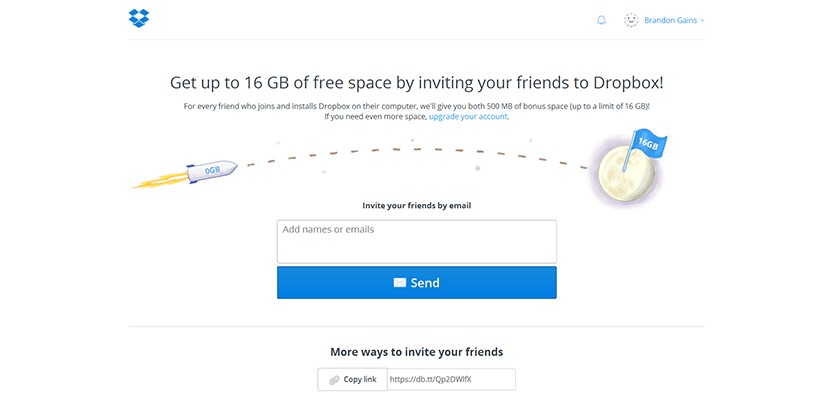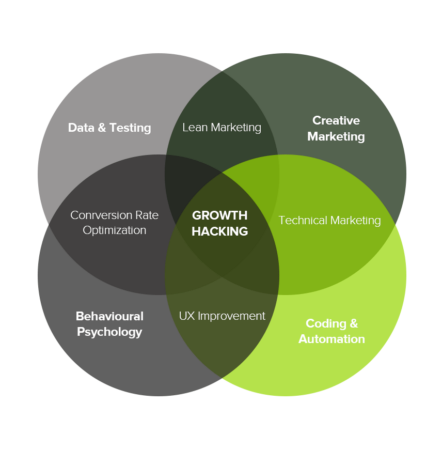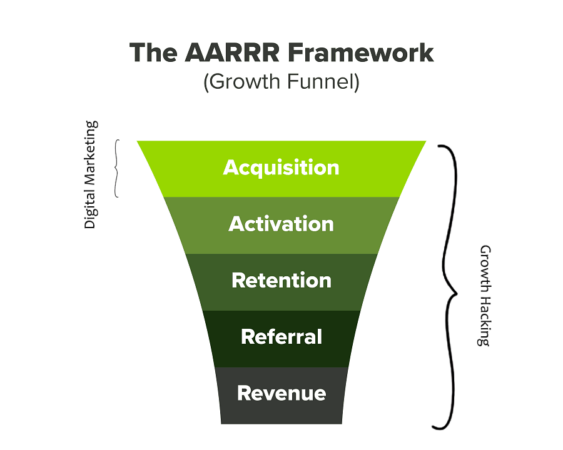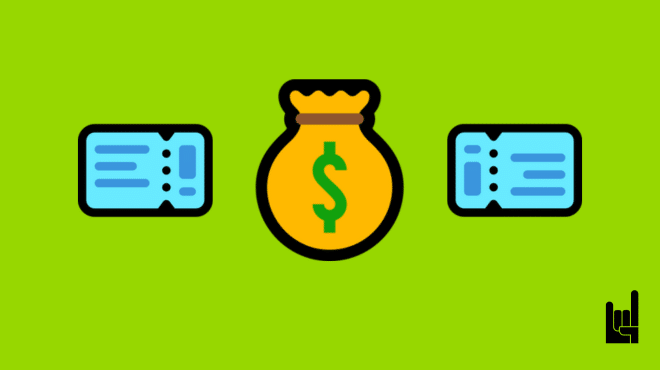I just googled “growth hack your” and it brought back 46,500 results.
I’m pretty sure that if I google “growth hack your relationship” I’m going to get a result for that, too. Never mind, I just did – and, yes, I did find a result.
So what has growth hacking come to?
And, most importantly, what does ‘growth hacking’ mean for the digital marketing industry today?
What is Growth Hacking?
In a sentence, growth hacking is data-driven marketing that uses rapid experimentation and low-budget tactics to determine the most effective ways to grow a business.
Instead of relying on traditional marketing methods (like big ad budgets or slow brand-building efforts), growth hacking is about testing small, low-cost strategies to see what works best – and doubling down on that.
It’s commonly used by startups and digital businesses such as:
- Startups that need fast, cost-effective growth.
- Tech companies & SaaS platforms aiming for rapid user acquisition.
- ECommerce & marketplaces wanting to boost conversions.
- Social media & mobile apps focused on virality and engagement.
What is a Growth Hacker?
The term ‘growth hacker’ is 15 years old, and it all started with this post by Sean Ellis.
According to Ellis, “A growth hacker is a person whose true north is growth”. And continues, “Everything they do is scrutinized by its potential impact on scalable growth”.
Ultimately, the term was coined for a practical reason: to distinguish the traditional marketer from the kind of marketer the startup and tech world needed.
For example, both a dog food product and a SaaS product require marketing to succeed. However, their approaches differ so significantly that the strategies and tactics effective for one would be largely ineffective for the other.
It’s no coincidence that the first growth hackers didn’t have a background in marketing, business, or even economics but actually came from engineering.
So what does a growth hacker actually do?

A growth hacker is responsible for creating cost-effective strategies to grow its customer base and, ultimately, its profits. Although the role of the growth hacker can different from organization to organization, most growth hackers fall into one or more of these categories and actions:
- Identifying growth opportunities: analyze data, user behavior, and trends to find the most effective ways to grow a business.
- Running rapid experiments: test different strategies quickly to see what delivers the best results.
- Leveraging low-cost growth strategies: test different strategies quickly to see what delivers the best results
- Improving conversion & retention: keeping users after acquiring them and making them (more) active customers.
- Automating & Scaling what works: automated and scaled to maximize impact.
Growth hacking vs Digital marketing
Growth hacking is not entirely
But it’s still pretty different. t
Classic Growth Hacking Case Studies
You probably know some of the classic growth hacking cases and how small companies managed to build brand awareness with $0 ad spend.
Companies like Dropbox, Airbnb, and even pre-Microsoft Hotmail. All of them can point out growth hacking as a basic component of their success.
1. Dropbox
Instead of spending heavily on paid ads, Dropbox started experimenting with referral marketing. Its referral marketing campaign offered free storage space (500MB) to users who invited their friends. Both the inviter and the invitee received extra storage, creating a viral loop that incentivized users to share the service.

This simple yet powerful strategy increased signups by 60%, helping Dropbox grow from 100,000 to 4 million users in just 15 months. The referral program was cost-effective because it leveraged user actions instead of ad spend to drive growth. And it managed that by integrating sharing directly into the product
2. Airbnb
Airbnb is another classic example. The popular rental platform gave an easy option to everyone who was posting their apartment on Airbnb to also post it on Craigslist. If the user opted in, then the post was automatically posted on Craigslist as well. And in that post, there was a link that was redirecting back to the original post on Airbnb.

As if this wasn’t enough, Airbnb scraped Craigslist for potential users and sent them personalized messages, inviting them to list on Airbnb instead The result? Airbnb quickly scaled from a small startup to a billion-dollar company, proving that growth hacking isn’t about spending more – it’s about finding smart, creative ways to tap into existing demand.
3. Hotmail
Last but not least, there is the case of Hotmail, which in the mid-’90s went from 0 to 12M users in 18 months. And this number becomes even more impressive when we consider the total internet population of the era. So how did Hotmail pull that off?
It used this simple, albeit ingenious tactic: under every email, there was this signature:

Every recipient who received an email from a Hotmail user saw this message and could sign up with a single click. This turned every Hotmail user into a brand ambassador, spreading the service organically.
What Growth Hacking is Not About
To better understand what growth hacking is not about, let’s start with an example.
In the past, we ran a LinkedIn experiment, which took off at the time. According to the experiment, we proved that the place you insert a link on a LinkedIn post affects the total reach of the post and the total clicks it will get – almost by 3X.
Someone could say that this is a ‘LinkedIn growth hack’.
So why didn’t we, as a growth hacking agency that sells growth hacking services, keep that a secret and then add a “LinkedIn Growth Hack” service?
That’s because we don’t sell growth hacks, we sell growth hacking. Like most other growth hacking agencies who know what they’re doing.
So, whenever you read or hear about “The X growth tactics to transform your business”, just run away.
What Growth Hacking Is About
Now that we know what growth hacking isn’t, let’s see what it really stands for. We already gave the definition of growth hacking but we need to go deeper than that.
Growth hacking is the branch of digital marketing where data matters more than hierarchy, and ROI is more important than brand awareness.

Growth is a mindset – it’s not about implementing a certain tactic. It’s about seeing what works and what doesn’t – and why. Accordingly, growth hacking is about documentation and leaving something behind.
For example, we documented a pretty successful automation that helped us fill an entire class for our Growth Hacking University, and made it public. From the PDF creation to the testings and the man-hours needed for every step, you can take a look at the entire process here: How a Single Automation Helped Us Fill Up an Entire Class.
In practice, growth hacking is mostly about three things: the funnel, the process, and the skillset.
Let’s take a quick look at every one of these.
The Funnel
On the one hand, digital marketing primarily focuses on how to get customers.
On the other hand, growth hacking’s concern goes beyond acquisition and it examines the rest growth funnel, too.
The growth funnel is made of five stages. a customer goes through. Each stage focuses on its own metric. Accordingly, these phases are:
- Acquisition
- Activation
- Retention
- Referral
- Revenue

As Activation is also part of the product in many cases, growth hacking blurs the line between marketing and product.
For more about the growth funnel, how it works in practice, and how you can make your own, you can read this next: AARRR Framework: 10 Steps to Building a Growth Funnel
The Process
Growth hacking involves a process. Not two growth hacking strategies look the same, however, what follows is the template of a vanilla growth marketing process.
1. Identify goals & North star metric
- Define clear, measurable objectives (e.g., increase sign-ups, reduce churn, improve retention).
- Focus on a North Star Metric that best represents long-term growth (e.g., daily active users, revenue per customer).
2. Analyze the funnel & User journey
- Map the customer journey from awareness to conversion and retention.
- Identify friction points and drop-off areas in the funnel (AARRR: Acquisition, Activation, Retention, Revenue, Referral).
- Use analytics tools like Google Analytics, Hotjar, or Mixpanel.
3. Generate & prioritize growth Ideas
- Brainstorm potential experiments across marketing, product, and customer experience.
- Prioritize high-potential experiments.
4. Rapid experimentation & execution
- Launch small, controlled experiments (e.g., A/B tests, new landing pages, viral loops).
- Use automation and AI tools for optimization.
- Example experiments:
- Tweaking onboarding flows for better activation.
- Referral programs for virality.
- Content marketing & SEO to drive organic traffic.
- Paid ads with precise targeting.
5. Measure & analyze results
- Track key KPIs and growth metrics (conversion rates, LTV, CAC, retention).
- Identify what worked, what didn’t, and why.
6. Scale winning experiments
- Implement successful tests at a larger scale.
- Automate or systematize high-impact strategies.
7. Iterate & optimize
- Continuously repeat the process.
- Stay agile and adjust strategies based on real-time data.
The Skillset
A growth hacker is usually identified as a T-shaped marketer, also known as a Π-shaped marketer. This type of marketer covers a wide range of the digital marketing spectrum and specializes in one or two areas.
Especially since the no-code revolution, and with so many well-written digital marketing blogs out there, it’s become easier for marketers to get involved in more verticals. Now, marketers can be makers and take part in more tech-oriented and hands-on verticals such as development and marketing automation.

In GrowthRocks specifically, another important aspect of what makes a growth hacker is that of work ownership. In typical digital marketing agencies, and even more evidently in marketing firms, managers and departments are not rare to find and there is a hierarchical structure present. For good or for bad, in growth hacking there is usually none of that.
Unlike most kinds of agencies, growth hacking agencies are flat organizations. In other words, we are to ad/ digital marketing agencies what startups are to enterprises.
What growth hacking means for someone like me (a content marketer)
Excuse me for the first-person singular I’m going to use for this particular part, but I’m the professional I know the most, so that’s where I can get the most insight from (makes sense, right?).
Do you want to know what my content marketing process looked like a few years ago before I came across growth hacking?
To begin with, if I wanted to write a piece of content I would do some research and create a blog post outline. Then I would write that blog post, hit Publish, and post it on social media.
And what would be it.
And the truth is that this is what content writing looks like for many marketers.
Unless you write for a big media publisher, or you are a well-established name in your industry or niche, the above actions won’t get you far. Because you will never get an ongoing organic traffic source, as you can’t rank your content in Google. And thus, your content has little to no value.
Now enter the T-shaped (content/SEO) marketer.

When I write a piece of content now, I do research but also keyword research, too. I then proceeded to write the blog post, as I would.
When I’m done with the writing part, I do an on-page SEO.
I also make the thumbnail and the OG. It’s nothing fancy, really, but it’s good for what it is.
Furthermore, when I want to distribute the post, I go beyond social media and communities. I also do email marketing in the form of newsletters and cold outreach.
At the time same time, we know that most articles aren’t going to rank by themselves. So this is where link-building comes into the picture. And since we do white hat SEO, it takes time.
Last but not least, a few weeks after the post goes live, I will also have to have a look at our Analytics and Ahrefs to see what worked and what didn’t.
Also, keep in mind that many of our posts are part of our inbound marketing strategy. My work doesn’t take place in a silo. It’s connected to the business.
In other words, I shouldn’t just “bring people to our blog”. Traffic for the sake of traffic is a vanity metric. On the contrary, traffic should be based on search intent, and connected to our business and services.
Conclusion
Growth hacking remains a powerful tool and a mindset in the hands of startups and businesses with limited budgets, including agencies that work for them, like startup marketing agencies and SaaS marketing agencies.
If I wanted to compress this whole article into one sentence it would be:
Growth hacks are out, growth hacking -in the form of growth marketing- is in.
Do you need help growing and looking for growth hacking services? You can contact us here and see how we can help!
Was this article useful?

I write for GrowthRocks, one of the top growth hacking agencies. For some mysterious reason, I write on the internet yet I’m not a vegan, I don’t do yoga and I don’t drink smoothies.
![Community Marketing: 6 Steps to Building a Brand Community [+5 Examples]](https://growthrocks.com/wp-content/uploads/2023/07/community-marketing_GrowthRocksTN.jpg)



2 Responses
Growth hacking is not everyone’s cup of tea. The most important that any marketer who wants to be a growth hacker needs to master the G.R.O.W.S. framework.
Finally, I understood what is growth hacking, Informative Content Nicolas Lekkas. Great Job, Keep Doing the same.